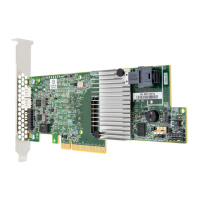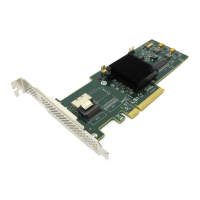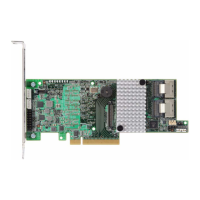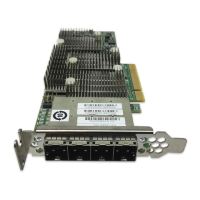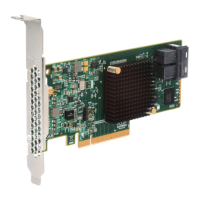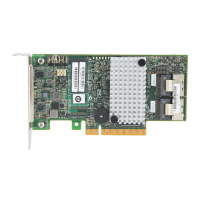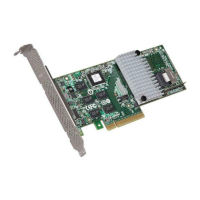LSI Corporation
- 11 -
6Gb/s MegaRAID SAS RAID Controllers User Guide
August 2012
Chapter 1: Overview
Benefits of the SAS Interface
1.5 Benefits of the SAS Interface
SAS is a serial, point-to-point, enterprise-level device interface that leverages the proven SCSI protocol set. SAS is a
convergence of the advantages of SATA, SCSI, and Fibre Channel, and it is the future mainstay of the enterprise and
high-end workstation storage markets. SAS offers a higher bandwidth per pin than parallel SCSI, and it improves
signal and data integrity.
The SAS interface uses the proven SCSI command set to ensure reliable data transfers, while providing the
connectivity and flexibility of point-to-point serial data transfers. The serial transmission of SCSI commands eliminates
clock-skew challenges. The SAS interface provides improved performance, simplified cabling, smaller connectors,
lower pin count, and lower power requirements when compared to parallel SCSI.
SAS controllers leverage a common electrical and physical connection interface that is compatible with Serial ATA
technology. The SAS protocols and the SATA III protocols use a thin, 7-wire connector instead of the 68-wire SCSI cable
or 26-wire ATA cable. The SAS/SATA III connector and cable are easier to manipulate, allow connections to smaller
devices, and do not inhibit airflow. The point-to-point SATA III architecture eliminates inherent difficulties created by
the legacy ATA master-slave architecture, while maintaining compatibility with existing ATA firmware.
1.5.1 PCI Express Architecture
PCI Express is a local bus system designed to increase data transfers without slowing down the central processing unit
(CPU). You can install MegaRAID PCI Express RAID controllers in PCI Express computer systems with a standard bracket
type. With these controllers in your system, you can connect SAS devices and SATA III devices over the bus.
PCI Express goes beyond the PCI specification in that it is intended as a unifying I/O architecture for various systems:
desktops, workstations, mobile devices, servers, communications, and embedded devices.
1.5.2 Operating System Support
The 6Gb/s MegaRAID SATA+SAS RAID controllers support the following operating systems:
Microsoft® Windows® 2000, Windows XP, Windows XP x64, Windows Server 2003 (x86), Windows Server 2003
(x64), Windows Vista, Windows Server 2008, and Window Server 2012
Red Hat® Linux™
SuSE® SLES
Novell® NetWare®
SCO® OpenServer®
SCO UnixWare®
Solaris®
FreeBSD®
VMware®
Refer to the MegaRAID SAS Device Driver Installation User Guide for more information about the drivers. To download
the latest operating system drivers, go to: http://www.lsi.com/cm/DownloadSearch.do.
The 6Gb/s MegaRAID SATA+SAS RAID controllers use Fusion-MPT architecture for all major operating systems, thinner
drivers, and better performance.
NOTE Some PCI-E slots support PCI-E graphics cards only; RAID controllers installed in these PCI-E slots do
not function.
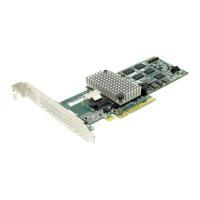
